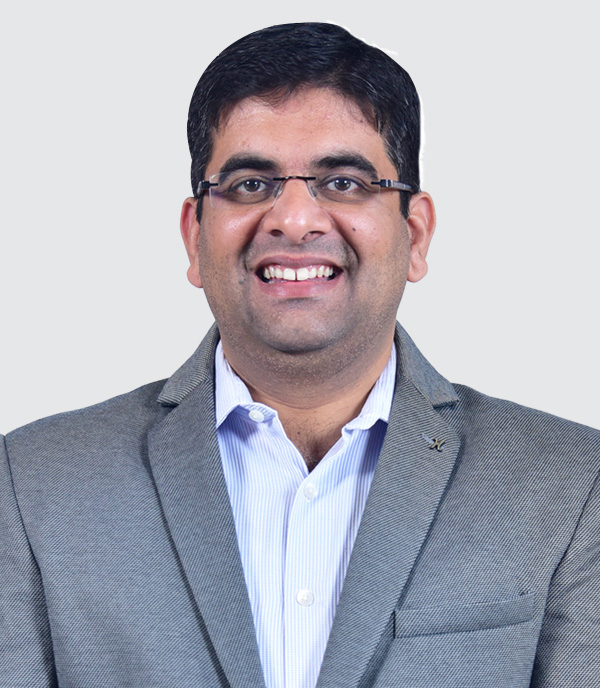Why India’s expanding waistline demands urgent attention?
 by Dr. Puneet Khanduja and Dr. Preeti Khanna
by Dr. Puneet Khanduja and Dr. Preeti Khanna May 23, 2025
May 23, 2025 5 min
5 min
Dr Puneet Khanduja and Dr Preeti Khanna highlight how India’s obesity crisis—often overshadowed by undernutrition—demands urgent policy, healthcare, and societal interventions to prevent a looming public health catastrophe
In a small clinic in Mumbai, a doctor sees two patients back-to-back. The first is a severely underweight child stunted from years of malnutrition. The second is a 32-year-old man, obese and pre-diabetic. This stark contrast is a growing reality in India. While hunger remains a crisis, obesity is an equally urgent public health emergency. Yet, unlike diabetes or heart disease, obesity continues to be India’s silent epidemic—recognised but rarely confronted.
India ranks third globally in projected obesity-related economic losses after China and the US. Urban obesity rates range from 13 per cent to 50 per cent, and even in rural India, they hover between 8 per cent and 38 per cent. The proportion of overweight children rose 2.1 per cent to 3.4 per cent between recent national surveys (NFHS-4 to NFHS-5) (1). Obesity doesn’t stay solo for too long. It is often the precursor to many Non-Communicable Diseases (NCDs), including diabetes. Between 1990 and 2016, India’s diabetes prevalence jumped by 64 per cent (2), as cases skyrocketed from 26 million to 65 million. This is just one of the many health issues that stem out of obesity.
Obesity costs India an estimated USD 23.2 billion (3) annually in healthcare expenses and lost productivity. If current trends continue unchecked, global obesity-related GDP losses could soar to USD 4 trillion (4) by 2035.
Despite these alarming numbers, India lacks a coordinated response to obesity. The National Programme for Prevention and Control of Non-Communicable Diseases (NP-NCD) (5) labels obesity as a risk factor but allocates little direct funding to combat it. Other nations have taken decisive action – New York (6) banned trans fats, and the UK (7) and US (8) introduced sugar taxes—but India’s policy measures remain weak and poorly enforced. The government’s Eat Right India (9) campaign has made some progress in raising awareness, but it stops short of regulating food companies that flood the market with ultra-processed, high-sugar, high-fat products.
Obesity care is also financially out of reach for most Indians. While Ayushman Bharat (10) covers major health risks, it does not include obesity treatment or weight management programs. Private insurance policies exclude obesity-related care unless linked to severe complications. This forces most Indians to delay intervention until it is too late.
India’s food environment does little to support healthy choices. Unhealthy, ultra-processed foods are aggressively marketed, especially to children. Meanwhile, fresh, nutritious food remains expensive and inaccessible to many.
For low-income populations, deep-rooted cultural perceptions that link higher body weight with prosperity add another layer of resistance to obesity prevention efforts. Even those who wish to make healthier choices are constrained by poor urban planning. Indian cities are designed for vehicles, not people. Pedestrian walkways are scarce, cycling infrastructure is almost nonexistent, and green spaces where people can exercise are shrinking daily.
To prevent obesity, India must implement strong fiscal policies that shape healthier consumer choices. Taxes on sugary drinks and subsidies for fruits and vegetables can make nutritious food more accessible and discourage excessive sugar intake. Restricting junk food marketing to children and strengthening school-based nutrition and physical education will help instill lifelong healthy habits. Additionally, urban infrastructure should be redesigned to encourage physical activity, with more pedestrian pathways, cycling tracks, and recreational spaces.
Beyond policies, public awareness and cross-sector collaboration are essential. Culturally sensitive campaigns in schools, workplaces, and mass media can reinforce healthy behaviors. Technology can support weight monitoring, virtual counseling, and digital health services. Meanwhile, health, education, and urban planning must align efforts to create environments that support active lifestyles. The private sector should also be engaged in food reformulation and improved labeling to empower consumers.
Obesity care must be integrated into primary healthcare for early diagnosis and treatment. Ayushman Bharat Health and Wellness Centres should offer BMI screenings and trained counseling. Establishing referral pathways for specialised care and expanding dietitians and bariatric surgeons will improve access. Finally, affordable treatments, regulated therapies, and evidence-based interventions are key to ensuring effective obesity management.
By 2050, a third of India’s population could be obese. Yet India still lacks a national obesity registry, and prevention remains an afterthought (11).
The real question is not whether we should act on obesity but why we have not already. Will the country wait until this crisis spirals out of control, or will it take decisive action now? This World Health Day, India must stop seeing obesity as a secondary issue and start treating it like the public health emergency it truly is.
References:
1. Ministry of Health and Family Welfare, Government of India. 2021. National Family Health Survey (NFHS-5), 2019–21. https://mohfw.gov.in/sites/default/files/NFHS-5_Phase-II_0.pdf.
2. Pradeepa, R., and V. Mohan. 2021. “Epidemiology of Type 2 Diabetes in India. Indian Journal of Ophthalmology 69 (11): 2932–38. https://doi.org/10.4103/ijo.IJO_1627_21.
3. Okunogbe, A., R. Nugent, G. Spencer, J. Powis, J. Ralston, and J. Wilding. 2022. “Economic Impacts of Overweight and Obesity: Current and Future Estimates for 161 Countries. BMJ Global Health 7 (9): e009773. https://doi.org/10.1136/bmjgh-2022-009773.
4. Ng, Marie, et al. 2021. “Global, Regional, and National Prevalence of Adult Overweight and Obesity, 1990–2021, with Forecasts to 2050: A Forecasting Study for the Global Burden of Disease Study 2021. The Lancet 405 (10481): 813–38.
5. Ministry of Health and Family Welfare, Government of India. 2025. National Programme for Prevention & Control of Cancer, Diabetes, Cardiovascular Diseases & Stroke (NPCDCS).
6. Mello, Michelle M. 2009. “New York City’s War on Fat. New England Journal of Medicine 360 (19): 2015–20. https://doi.org/10.1056/NEJMhle0806121.
7. Rogers, N. T., S. Cummins, H. Forde, C. P. Jones, O. Mytton, H. Rutter, S. J. Sharp, D. Theis, M. White, and J. Adams. 2023. Associations between Trajectories of Obesity Prevalence in English Primary School Children and the UK Soft Drinks Industry Levy: An Interrupted Time Series Analysis of Surveillance Data. PLoS Medicine 20 (1): e1004160. https://doi.org/10.1371/journal.pmed.1004160.
8. Jones-Smith, J. C., M. A. Knox, S. Chakrabarti, et al. 2024. Sweetened Beverage Tax Implementation and Change in Body Mass Index Among Children in Seattle. JAMA Network Open 7 (5): e2413644. https://doi.org/10.1001/jamanetworkopen.2024.13644.
9. Ministry of Health and Family Welfare, Government of India. Food Standards and Safety Authority of India (FSSAI). https://eatrightindia.gov.in.
10. National Health Authority, Government of India. Ayushman Bharat Digital Mission. https://abdm.gov.in/abdm-components.
11. Kerr, Jessica A., et al. 2021. Global, Regional, and National Prevalence of Child and Adolescent Overweight and Obesity, 1990–2021, with Forecasts to 2050: A Forecasting Study for the Global Burden of Disease Study 2021. The Lancet 405 (10481): 785–812.
The blog was first published on Express Healthcare on 16th May 2025.
Written by

Dr. Puneet Khanduja
Associate Partner
Leave comments